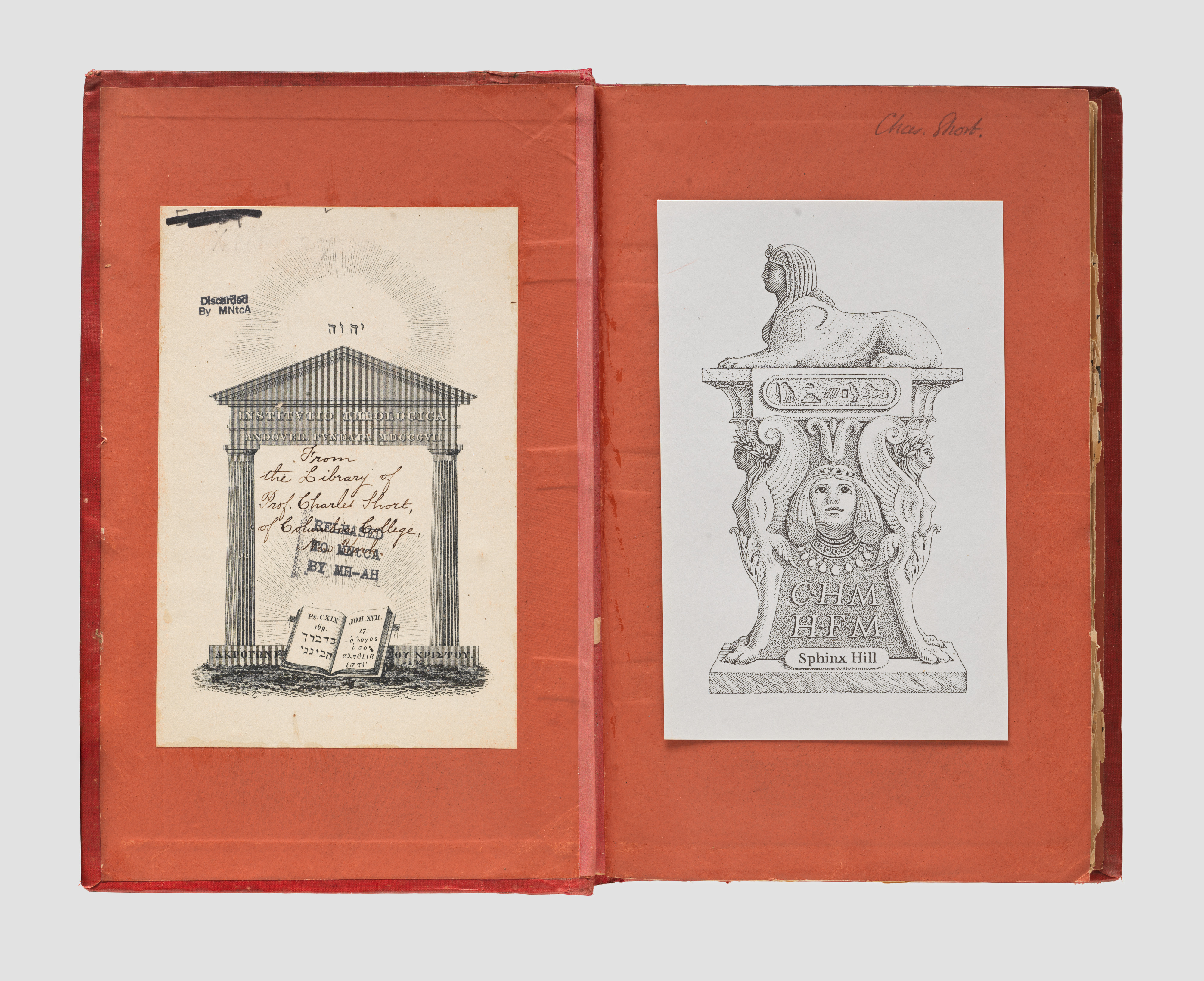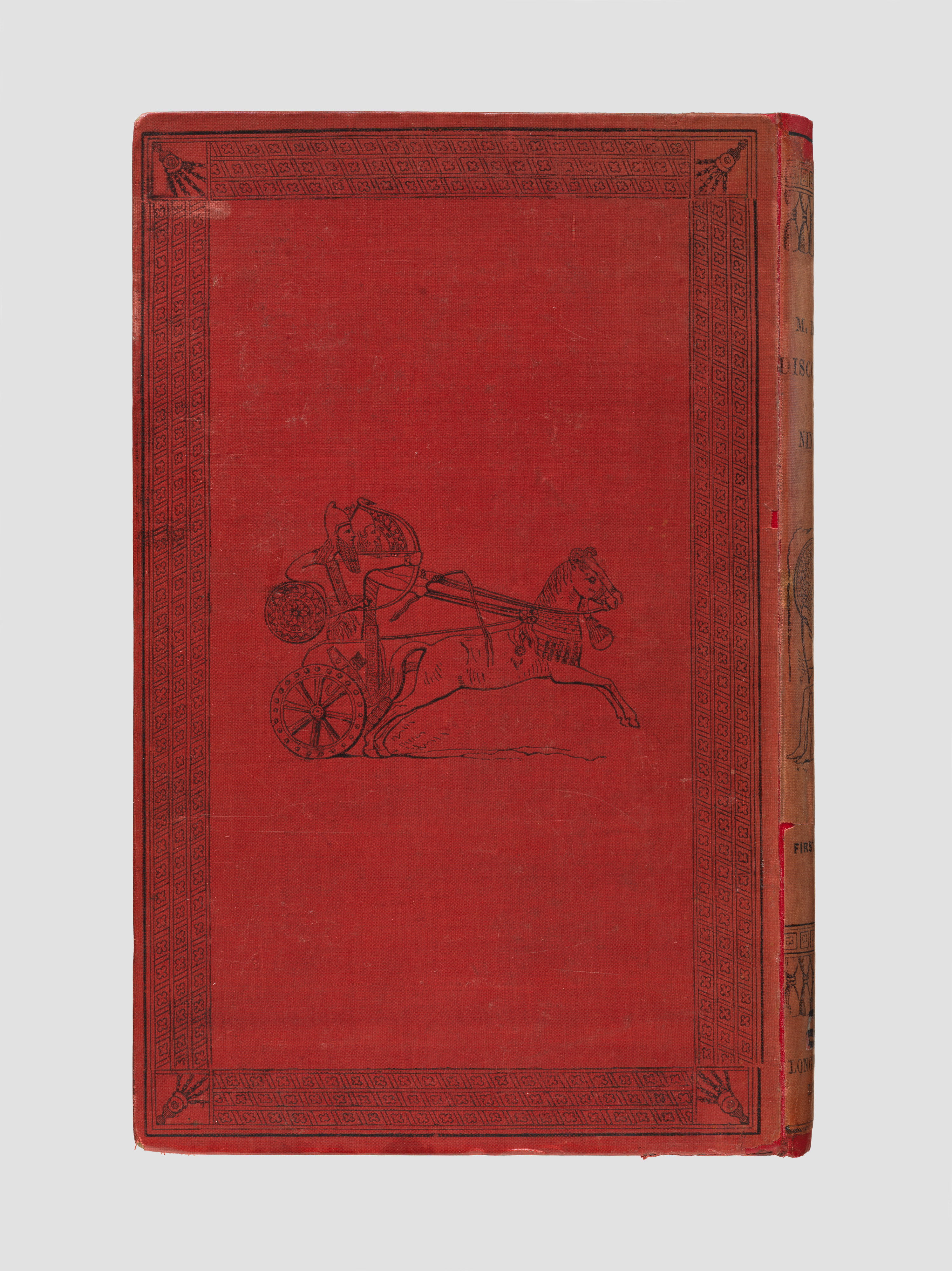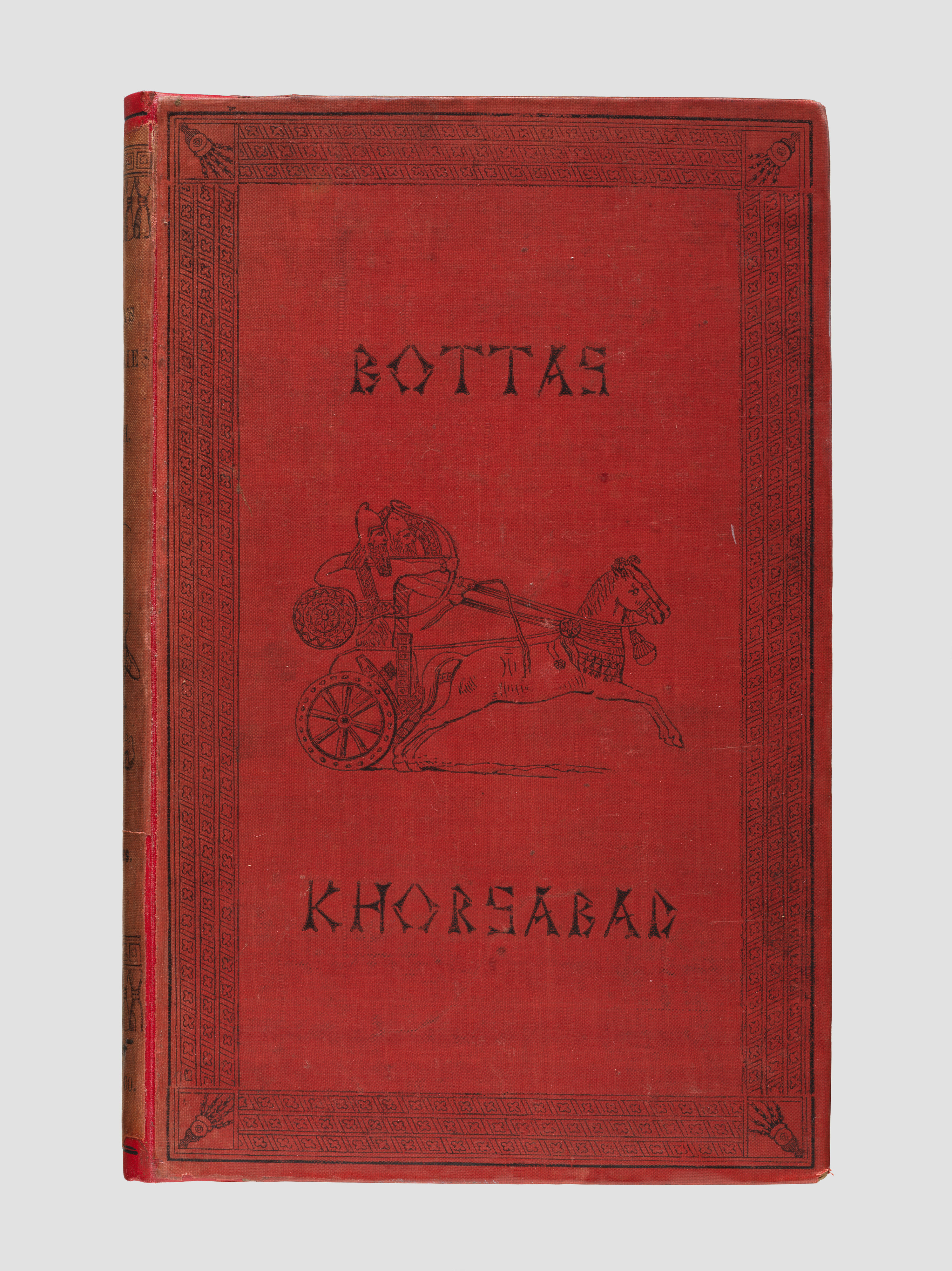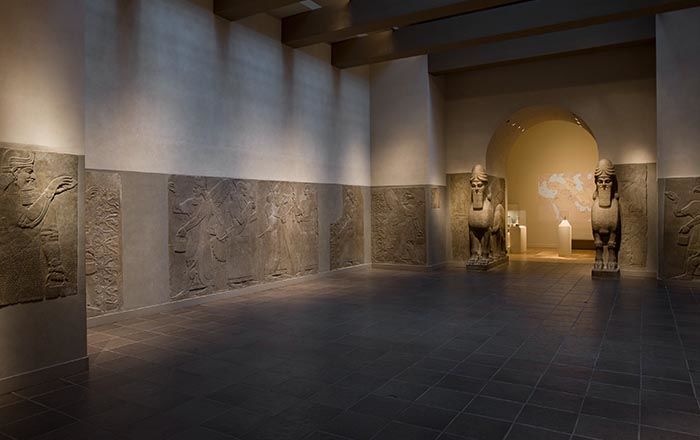M. Botta’s Letters on the Discoveries at Nineveh
Not on view
Following the excavation of Assyrian palaces in the mid-nineteenth century, ancient Mesopotamian imagery began to be used in European decorative arts, including jewelry and ceramics. Publicity in the form of news coverage and popular books around the excavations, removal of many sculptures from sites in northern Iraq to England and France, and public spectacles such as the reconstructed ‘Nineveh Court’ in the Crystal Palace at Sydenham, London, fostered a fascination with Assyria and Assyrian art among the Victorian public.
Paul-Émile Botta, born in Italy but a naturalized French citizen, was the first excavator of an Assyrian palace. His own academic background was in botany and zoology, and he had traveled around the world as a doctor on a scientific expedition as well as through much of Arabia for the French National Museum of Natural History. He was appointed French Consul in Mosul in the hope that he would make antiquarian investigations, but the scale and character of what he found were beyond anyone’s expectations in scope and in many ways completely unfamiliar. Modern archaeological methods had not yet been developed, nor could anyone yet read the inscriptions found on some of the palace sculptures—Botta himself did not know whether it was a palace he was excavating or a giant tomb. Botta’s letters to Jules Mohl, secretary of the French Asiatic Society in Paris, are frank about his own confusion and uncertainty, as well as the excitement of the discoveries.
The translator of the letters, "C. T.", was Catherine Tobin, who took a strong interest in antiquities and would go on to publish books on her own extensive travels in the Ottoman Empire.
This image cannot be enlarged, viewed at full screen, or downloaded.
This artwork is meant to be viewed from right to left. Scroll left to view more.





